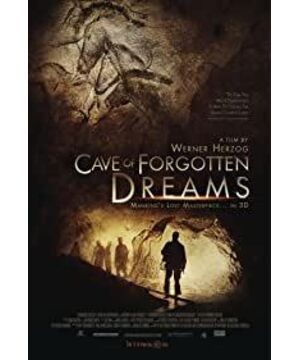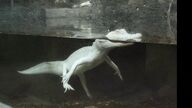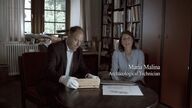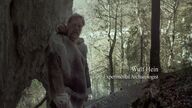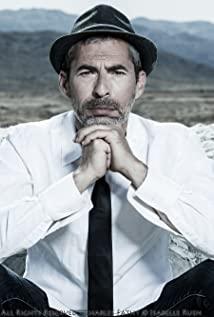The 3D Mysterious Sleepwalking by Horso is the Grotte Chauvet cave located in Ardèche in southern France, which contains the ancestors of modern people more than 30,000 years ago. The frescoes painted by the Cro-Magnon people are also the oldest cave paintings in existence. Speleologist Jean-Marie Chauvet and others discovered it in 1994; it was listed as a national cultural property by the French Ministry of Culture after 1997. For the purpose of protecting the murals from external harm, except for a few Except for some licensed researchers, the general public is not allowed to visit inside. Having said that, through Horso's movie lens, we can still go deep into the cave to find out.
For this movie, 3D is absolutely a necessary evil-the evil is that most movies only use 3D to follow the trend, attract the box office or show off special effects-to assist the audience sitting in the movie theater to make them have the experience Indispensable technology for the sense of environment. From the beginning of the movie, we followed the camera to shuttle between the fields during the slack time, climbed all the way, over the bushes, then saw a white rocky mountain wall, and finally into the dark cave, only to see the stalactites full of crystals reflected. The dim light flickered non-stop. Jose's lens is full of dynamics, supplemented by the immersive effect of 3D images, which makes the scene different from near and far, with plants and trees within reach, as if really setting foot on the land of southern France. Obviously, Jose did not let 3D technology fall into the dilemma of overkill. However, the true charm of 3D still has to be fully displayed in Xuewei Cave. Whether it is the stalactites, stalagmites, stone pillars in the limestone caves, or the animal bones covered with calcite crystals, they all present themselves in an extremely real appearance. In addition, the murals painted on the concave and convex rock walls, under the swaying of the light and shadow of the torch simulated by Husuo's cold light board, actually look lifelike. With the horse galloping, the prehistoric animal wonders are performed on the icy rock wall. He Suo thinks this is the earliest animated film of mankind.
In fact, judging from the film’s material and the aforementioned content, "Hesuo's 3D Mystery Sleepwalking" can easily become a highly academic, boring and serious documentary that appeared on the Discovery channel or in a museum. Fortunately, Hesuo succeeded in surpassing it. Coming out, just as he crossed the various restrictions in the cave-including time, being unable to touch anything, and being unable to step out of the walkway-just like the infinite picture presented by the lens. With his unique humanistic viewpoint, Hesuo let us not only Use your eyes to see, use your brain to think, and more importantly, use your heart to feel. "Please be quiet, everyone. We have to listen to the silence in the cave, and maybe we can hear our own heartbeat." The guide said to everyone. In this perfect space-time capsule, time seems to be stagnant, and everything from more than 30,000 years ago has been sealed so far; however, once you listen carefully, the ticking of water droplets and thumping heartbeat prove that time is still moving forward. It seems that Heso is not only trying to interpret the lives of primitive humans, but also hopes to start a dialogue across the ages through the heart.
Researchers use scientific instruments to explore the caves, and Hesuo used 3D images to record the caves. The mystery of Xuewei Cave seems to be solved by modern technology, but is this really the case? Researchers can thoroughly grasp all the evidence left over from the scene. If they want to piece together the complete picture of primitive life, they can only rely on speculation—for example, because no human bones are found in the cave, people do not live in the cave—everything is It is built on "because... so...", which means that modern technology can't touch the true meaning of the original at all. What is the ochre-red figure dipped in the palm of your hand? What's the meaning of the mural of the bull head woman's body? After entering the cave, the researcher who once worked in the circus was stunned by the animals in the murals and real animals in his dreams, making him decide not to return to the cave again. Is this an exchange of souls? Another researcher imitated primitive humans throwing a spear, but he was teased by Hesuo: "This should not kill the horse, right?" Another researcher imitated a bone flute, but the sound of the sound seemed weak. There are various signs that modern people have tasted the powerlessness in front of primitive civilization. "Can we travel through this abyss of time and space to understand the dreams of these artists?" Hesuo asked.
Undoubtedly, He Suo is definitely an extremely self-director. In addition to the interview clips, the whole movie is almost built on the narration of Joseo. While narrating and asking questions, he also interrupts the interviewees from time to time. It is obvious that Joseo is not only in the position of the record, but also Forcibly intervene in the film with his own perspective and point of view. Especially in the latter part of the film, when the aerial shots of the remote-controlled aircraft-that is, the eyes of the audience-fall straight into the hands of the staff, Hesuo's attempt to remind the audience of the director's existence is self-evident. However, Horso's intervention in the film narration also provides an opportunity for himself to have a dialogue with himself, and his thoughtful words also guide the audience to have a dialogue with him through the heart without knowing it. Yes, the dialogue is the biggest purpose of this documentary. He not only allows the modern and the ancient to talk to people, and allows people to talk to nature, but also allows himself to talk to himself. What's more, isn't the real world after movies and 3D glasses also two parties to the conversation?
In the film's postscript, Hesuo turns the lens to a nuclear power plant not far from Xuewei Cave, and the greenhouse garden created by using the hot water produced by nuclear power generation. A large number of crocodiles are raised and bred in the garden, among them, crocodiles with albinism appear. It turns out that human beings can create civilization as well as nature. Then compare the doors at the entrance of Xuewei Cave and the nuclear power plant that resemble a bank vault. It is not difficult for us to find a contradictory fact: human beings are trying to protect primitive civilization while at the same time destroying primitive civilization. In fact, while embracing and relying on technology, Husuo also does not forget to reflect on modern civilization. This is Jose.
View more about Cave of Forgotten Dreams reviews


